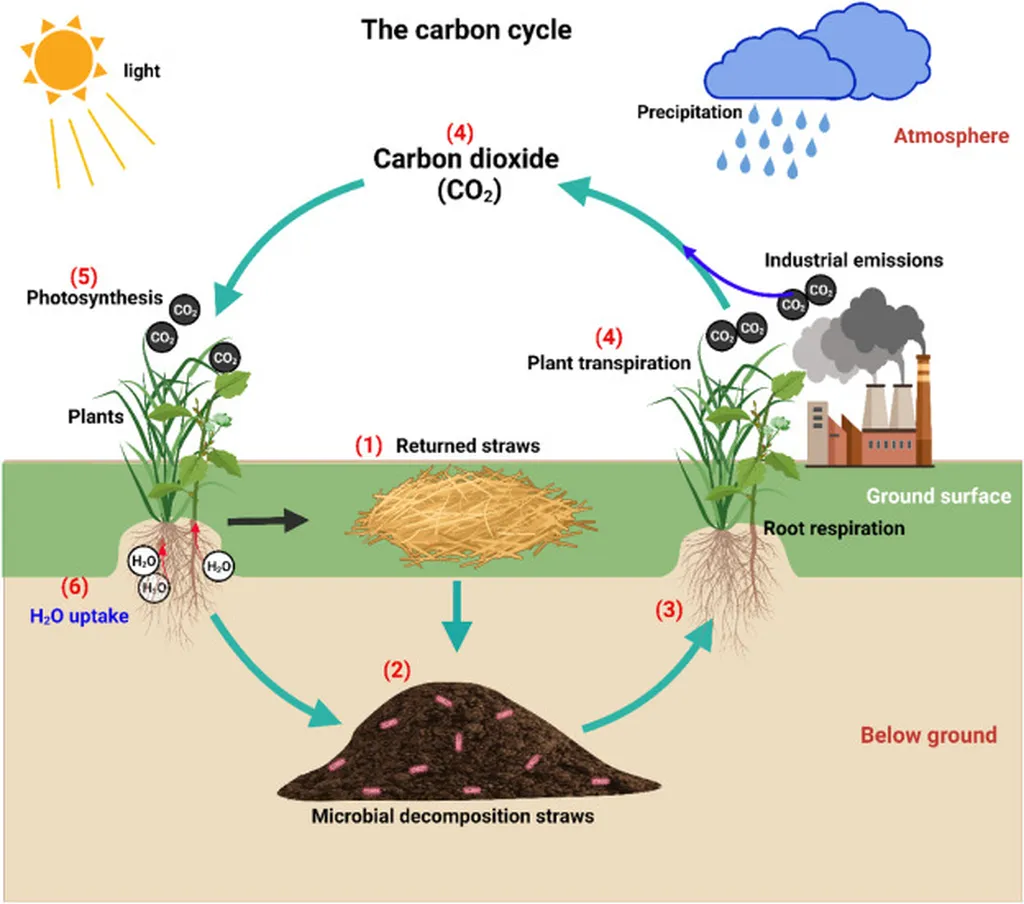In the rolling hills of Southwest China, where purple soil dominates the landscape, a seven-year field experiment has uncovered promising strategies to combat soil erosion and boost maize yields. Led by Hong Wang from the Institute of Agricultural Resources and Environment at the Sichuan Academy of Agricultural Sciences, the study, published in *Agricultural Water Management* (which translates to *Water Management in Agriculture*), sheds light on the intricate dance between tillage practices, straw mulching, and their impacts on runoff, nutrient loss, and crop productivity.
The research, conducted at 15 randomly selected sites, compared five different management practices: no tillage, ridge tillage, strip tillage, ridge tillage with straw mulching, and strip tillage with straw mulching. The findings are nothing short of transformative for the region’s agricultural sector. “We found that all conservation tillage practices reduced runoff depth and nutrient losses by 60–90% compared to no-till,” Wang explained. This is a significant breakthrough, as soil erosion and nutrient loss have been persistent challenges in sloping farmlands.
The study revealed that ridge tillage with straw mulching (TR4) was the most effective in minimizing runoff depth, while the nutrient losses were lowest in TR4 during dry and normal years, and in strip tillage with straw mulching (TR5) during wet years. This nuanced understanding of the interaction between tillage and mulching practices offers farmers a tailored approach to managing their lands based on annual weather patterns.
One of the most compelling aspects of the research is its focus on soil chemical properties. Straw mulching was found to be positively correlated with improvements in soil health. Annual soil organic carbon (SOC) increased significantly under TR4 (up to 31%) and TR5 (up to 17%) compared to other treatments. This enhancement in soil chemical properties is a game-changer for sustainable agriculture, as it directly impacts crop productivity and long-term soil fertility.
The study also highlighted the economic benefits for farmers. Maize yield and nutrient uptake responses were positive for TR4 in dry and normal years, and for TR5 in wet years, compared to no-till. This means farmers can expect higher yields and better returns on their investment by adopting these conservation practices.
The implications of this research extend beyond the fields of Southwest China. As the world grapples with the challenges of climate change and sustainable agriculture, the findings offer valuable insights into optimizing management strategies. The study’s emphasis on the interaction between straw return and soil tillage provides a roadmap for reducing nutrient loss through water erosion and advancing the conservation and sustainable utilization of sloping lands.
For the energy sector, the enhanced soil organic carbon levels could also have implications for carbon sequestration and reducing greenhouse gas emissions. As the global push for sustainable practices gains momentum, this research could shape future developments in agricultural technologies and policies aimed at mitigating climate change.
In the words of Hong Wang, “Our results will offer more precise management suggestions for the optimization of the interaction between straw return and soil tillage.” This research is a testament to the power of scientific inquiry in driving agricultural innovation and sustainability. As we look to the future, the insights gained from this study will undoubtedly play a crucial role in shaping the practices and technologies that will define the next era of agriculture.

